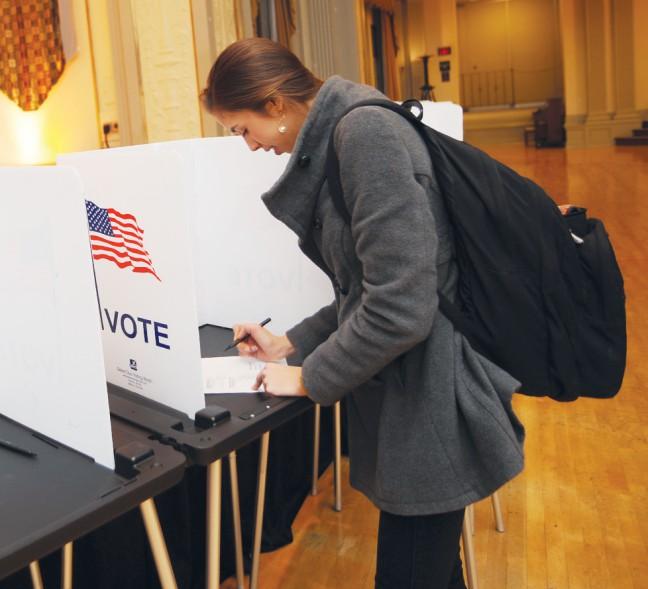This column is an introduction to the “Hansen Diversity Plan”, in which I propose a new approach to enhance the effectiveness of campus diversity efforts. In the past, I have been critical of the University of Wisconsin’s diversity policies and programs. My abiding concern has been their failure to deal with the underlying problem, namely the continued weak academic performance of so many targeted minority students, beginning in the elementary grades, continuing through middle school, and often worsening in high school. Until that problem is fixed, UW will never be able to achieve substantial increases in the number of targeted minority students it admits and later successfully graduates.
The current, now two-year old diversity plan, “Inclusive Excellence,” instituted by the Board of Regents attempts to redirect campus diversity policies and programs. But, like its predecessor Plan 2008, and before that the Madison Plan, Inclusive Excellence is campus-centered. This means it gives relatively little attention to pre-college learning. As a consequence, the plan has only a limited capacity to expand the “pipeline” of better prepared targeted minority students who have the potential to succeed and graduate from UW.
The “Hansen Diversity Plan” takes as its starting point “Inclusive Excellence.” But it rebalances its focus. Rather than giving what appears to be equal weight to “inclusive” and “excellence”, in the “Hansen Diversity Plan” the emphasis on “excellence” is increased and that on “inclusive” decreased.
How might this be accomplished? It would begin by recasting the goal of proportionality that underlies the “Inclusive Excellence” approach. That goal calls for the percentage of targeted minority students enrolled at UW to equal the percentage of recent targeted minority high school graduates.
My plan would instead shift the goal to call for the percentage of targeted minority students enrolled at UW to equal the percentage of targeted minority high school graduates whose high school academic records indicate their strong likelihood of graduating from college. This might be indicated by some measure of their “college readiness” or the extent to which they are “well prepared” to succeed in college. As a practical matter, it might be indicated by a combination of high school class rank and ACT/SAT scores. Rather than abruptly instituting this plan, it would be phased in over a four-year period.
What would this plan accomplish? First, it would send out an immediately clear message to students of all ages, parents, and schools that in UW-Madison admission decisions, targeted minority applicants will be held to a gradually rising academic standard over the next four years. This signal would help stimulate greater efforts by minority students to intensify their preparation for college, and would reinforce the work of the schools and the Wisconsin Department of Public Instruction to raise the academic achievement of those students throughout their school years.
What would be the immediate and short-run effects on enrollments, and on retention and graduation rates? The percentage of targeted minority freshmen admitted to UW would diminish over this four-year period and then stabilize, with targeted minority enrollment among the entering freshman class declining by as much as 25 percent. Within a year or two the first-year retention rate for these freshman would begin to rise. A few years later, increases would be observed in their 4-year, and later their 6-year graduation rates. As a result, the long-standing “gaps” in retention and graduation rates would finally begin to narrow at a more rapid pace.
Improvements in these two key measures of success would help blunt a longstanding criticism of diversity programs. It contends that the special treatment accorded targeted minority applicants means that some percentage of those admitted and subsequently enrolled do not measure up in their readiness for college. This contributes to the continuing wide gaps in retention and graduation rates.
With the reduced number of targeted minority students moving through their college years, some of the financial and human resources currently devoted to UW’s diversity programs, approximately $25 million in 2008-09, could be redeployed. Some of these redeployed resources should be concentrated on reducing the academic achievement gap for those targeted minority students who are enrolled.
This shift in the focus of diversity efforts would produce a double-barreled effect both for targeted minorities and UW– a direct effect in reducing existing gaps in retention and graduation rates, and a beneficial side effect in reducing and perhaps even eliminating the achievement gap.
The “Hansen Diversity Plan” can be implemented without great difficulty or fanfare. The chancellor and provost can join with the Faculty Senate in proposing this shift in emphasis. The proposal would call for altering the criteria used to admit students to UW-Madison. It would establish a monitoring system to ensure these criteria are responsibly applied. Finally, it would specify how to evaluate the impact of this shift and whether its projected effects are materializing.
That is what the “Hansen Diversity Plan” is all about. Nothing complicated. No additional expenditures or personnel are required. In fact, some resources now committed to diversity programs might be freed up for other purposes. One might be to help finance the Board of Regents $83.6 million high-priority budget request to increase the number of Wisconsin college graduates and thereby stimulate the growth of Wisconsin’s economy.
W. Lee Hansen ([email protected]) is a professor emeritus of economics.











